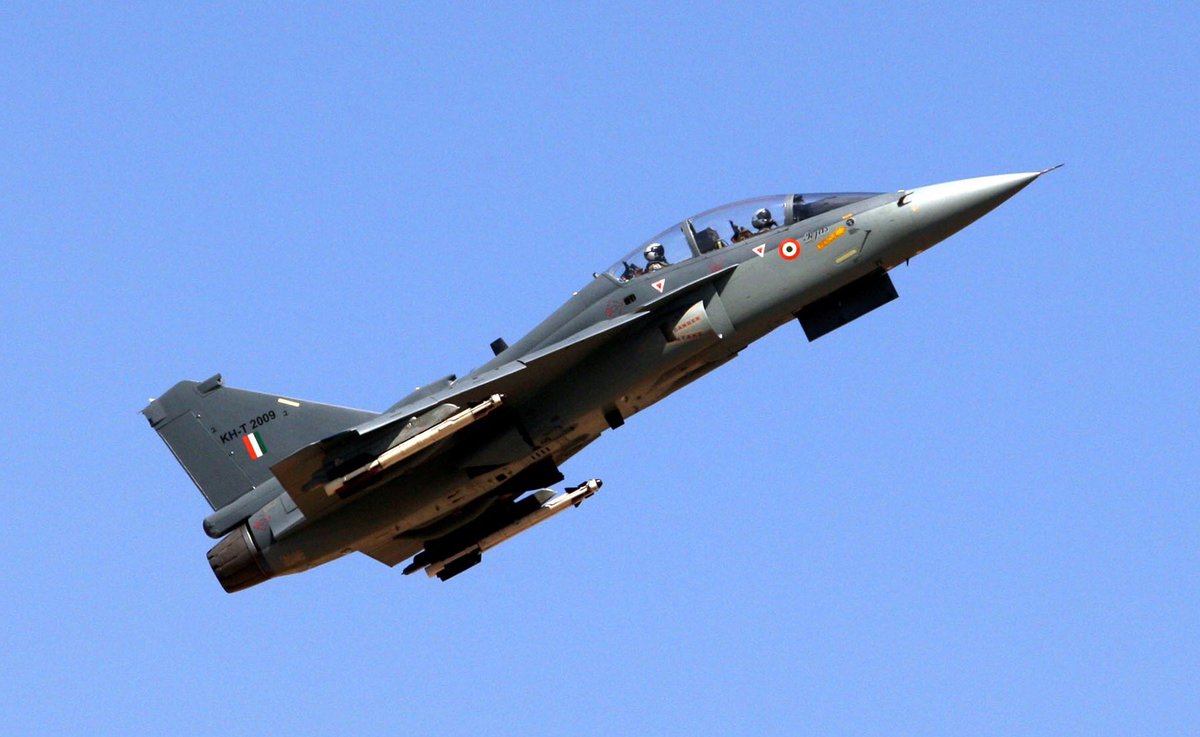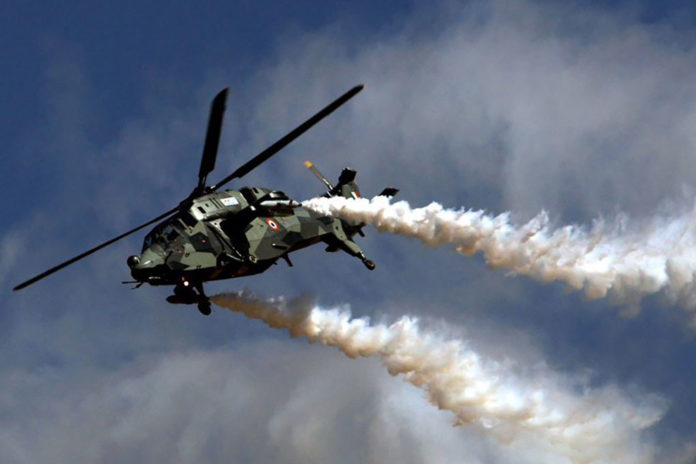
83 Tejas Light Combat Aircraft (LCA) built by PSU Hindustan Aerospace Ltd. (HAL) on order cannot fulfill the IAF thirst for new fighter jets. Locally developed for more than 20 years and built by Hindustan Aeronautics Ltd (HAL), those aircraft are less capable, compared to fighter jets of similar class India could get in the international market. To fill gaps created by MiG-21 and 27 units that are phased out of service, India needs few hundreds of additional jet planes (likely 200 – 250) to stand up and replenish about 20 squadrons in the coming decade.
Two of the more likely suppliers that have proposed to set up production lines in India are Lockheed Martin and Saab. Lockheed is ready to move here the production of the F-16V, while the Swedish firm will set up a production line of the Gripen E if it wins. Current models of the F-16 and Gripen are performing here at Aero India this week. Both were among the five finalists that competed for the now canceled MMRCA program (won by Rafale). The two companies are expected to establish a production line in India, by teaming with a private industry,
Boeing has already moved to produce the fuselage of the AH-64 attack helicopter in India. In 2015 the IAF ordered 22 such helicopters; the first will be delivered next year. India is expected to order more Apaches in the future. To support new production orders Boeing has teamed with Tata Advanced Systems Ltd (TASL) to produce Apache fuselages at their new facility in Hyderabad. The facility will eventually be the sole producer of AH-64 fuselages globally, boosting India’s prospects in the aerospace and defense sector.
To further increase its local operations Boeing has established ‘Boeing Defense India,’ a local operating unit of its defense operations focused on local services, support, sales and marketing, sourcing, manufacturing, and engineering, allowing Boeing to “deepen its relationship with the Indian defense ministry.” Local sourcing of aerospace components and subsystems require a significant change in local industrial standards and capabilities, a change that foreign companies like Boeing, Airbus, and IAI are carefully watching and anticipating, as they align to take Indian suppliers into their supply chain.
Organized by the Defence Exhibition Organisation, which falls under the MoD’s purview, the Indian Air Force, state-owned Defence Research, and Development Organization, the Department of Space, and the Union Civil Aviation Ministry, the 11th International Aero India will see participation from 750 exhibitors along with delegations from 100 countries. One of the largest exhibits at Aero India is the Russian one. Rostec Corporation, the parent company of state-owned Russian arms supplier Rosoboronexport, showcases here over 300 different military and aviation products; some are in service with the Indian Air Force, others are promoted in various marketing levels. These include combat aircraft, missiles, air defense and radio-electronic combat systems. As many of the familiar weapon systems on display have been validated in the fighting – in Syria, Iraq, and Ukraine, many of Russian-made weapon systems are regaining momentum and respect.
Although Russian manufacturers have an established record of local manufacturing and assembly of aircraft and other combat systems, new partnerships are being discussed to meet MAKE IN INDIA guidelines. “In the framework of “MAKE IN INDIA, mounted” we have signed an agreement to establish a joint venture for the production of Kamov Ka-226T helicopters in October 2016 at the BRICS summit. Now there is active implementation of this project,” Rostec CEO Sergey Chemezov said.
As a close ally and development partner in many defense programs, Israel is also a prominent exhibitor at Aero India. Eleven Israeli defense industries and start-up companies are displaying a wide array of advanced technologies in the Israeli national pavilion organized by SIBAT. As the Russian and US systems, Many of Israel’s weapon systems – guided missiles, drones, ISTAR, and self-protection systems, were validated in combat, by Israel’s Defense Forces as well as military forces of the leading nations – including the USA, Germany, France, Italy and the UK. Some of the items to be on display this year include a full-scale mockup or IAI’s Heron TP-XP – the new, exportable variant of Eitan, Israel’s Strategic UAV developed by Israel Aerospace Industries (IAI). An array of weapon systems displayed by RAFAEL are optimized for India’s future combat aircraft are also on display, as well as an array of avionics and helmet displays from Elbit Systems.
“The economic cooperation between India and Israel is strengthening,” said SIBAT Director, Brig. Gen. (res) Mishel Ben Baruch, “Israel is working to position itself as a leading partner for India in joint defense production, from a long-term vision that in the coming years all Indian defense procurement will be from local Indian companies. The Israeli national pavilion exposes Israeli-Indian cooperation and initiatives to enhance cooperation in the field of cyber security.”
As in past years, indigenous programs are making the headlines – as the Indian Air Force plans to finally induct the medium all-weather airborne early warning and control (AEW&C) aircraft based on a heavily modified Embraer E-145 business jet. The induction of the new airborne sensor will provide the IAF an ‘eye in the sky’, able to spot incoming, low flying threats such as cruise missiles and attack aircraft. The first aircraft is expected to be formally inducted into service tomorrow, with a second one in few months. At present, India has three larger and more capable IL-76 based Phalcon airborne warning and control system (AWACS) delivered from Israel. India is planning to order three additional Phalcons.
The new EMB145 based systems are equipped with a dorsal mounted linear antennae with 240-degree coverage. The Phalcons have three radar installed in a static dome that covers 360-degrees over a 400-km range. The AEW&C system will detect, identify and classify threats in the surveillance area and act as a Command and Control Center to support Air Defense operations.
Also, the Indian government has indicated plans to develop a new AWACS platform based on the Airbus A-330 platform. Once these two aircraft are completed, sometime in the next decade, six additional planes could be ordered.


















